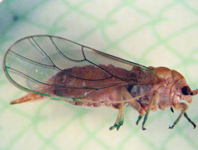Abstract
The family Dipsocoridae is first reported from the Korean Peninsula based on a finding of Pachycoleus japonicum (Miyamoto, 1964) comb. nov. Detailed description of male and female genitalia of P. japonicum is provided. A new generic combination for P. japonicum is proposed. The ambiguous characters for generic concept in previous work and implications to assign genus for the species in other faunas are discussed. Biological note on the unique habitat of the species unlike congeners is presented with illustrations and photographs. A key to the Korean dipsocoromophan families (species) is also provided.
References
Aukema, B., Rieger, C. & Rabitsch, W. (2013) Catalogue of the Heteroptera of the Palaearctic Region. VI. Supplement. The Netherlands Entomological Society, Amsterdam, xxiii + 629 pp.
Fieber, F.X. (1860) Exegesen in Hemipteren. Wiener Entomologische Monatschrift, 4, 258–272.
Heiss, E. & Pericart, J. (2007) Hémiptères Aradidae, Piesmatidae et Dipsocoromorphes euro-méditerranéens. Faune de France, 91, 1–509.
Hill, L. (1987) First record of Dipsocoridae (Hemiptera) from Australia with the description of four new species of Cryptostemma Herrich-Schaeffer. Journal of the Australian Entomological Society, 26, 129–139.
https://doi.org/10.1111/j.1440-6055.1987.tb00272.x
Josifov, M. (1967) Zur Systematik der Gattung, Cryptostemma H.S. (Heteroptera). Annales Zoologici, Warszawa, 25, 216–226.
Jung, S., Kerzhner, I.M. & Lee, S. (2011) A new record of the infraorder Dipsocoromorpha (Hemiptera: Heteroptera) from South Korea. Journal of Asia-Pacific Entomology, 14, 163–165.
https://doi.org/10.1016/j.aspen.2010.12.003
Kerzhner, I.M. (1995) Infraorder Dipsocoromorpha. In: Aukema, B. & Rieber, C. (Eds.), Catalogue of the Heteroptera of the Palaearctic Region. Vol. 1. The Netherlands Entomological Society, Amsterdam, pp. 6–12.
Miyamoto, M. (1964) A new species of Cryptostemma from Japan (Hemiptera, Dipsocoridae). Kontyu, 32 (4), 517–519.
Pluot-Sigwalt, D. & Péricart, J. (2003) The spermatheca of the Dipsocoridae with special reference to the strange “loculus capsulae” in Harpago species (Heteroptera, Dipsocoromorpha). Annales de la Société entomologique de France, New Series, 39 (2), 129–138.
Štys, P. (1990) Enicocephalomorphan and dipsocoromorphan fauna of W. Palaearctic (Heteroptera): composition, distribution and biology. Scopolia, 1 (Supplement), 3–15.
Štys, P. (1995) Dipsocoromorpha. In: Schuh, R.T. & Slater, J.A. (Eds.), True bugs of the world (Hemiptera: Heteroptera): classification and natural history. Cornell University Press, Ithaca, New York, pp. 74–83.
Weirauch, C. & Štys, P. (2014) Litter bugs exposed: phylogenetic relationships of Dipsocoromorpha (Hemiptera: Heteroptera) based on molecular data. Insect Systematics and Evolution, 45, 1–20.
https://doi.org/10.1163/1876312X-45012109
Weirauch, C. & Fernandes, J.A.M. (2015) The Minute Litter Bugs (Dipsocoromorpha). In: Panizzi, A.R. & Grazia, J. (Eds.), True Bugs (Heteroptera) of the Neotropics. Springer Science + Business Media, Berlin, pp. 99–109.
https://doi.org/10.1007/978-94-017-9861-7_5
Wygodzinsky, P. (1950) Contribution towards the knowledge of the family Cryptostemmatidae (Hemiptera). Revista Brasileira Biologia, 10 (4), 377–392.

